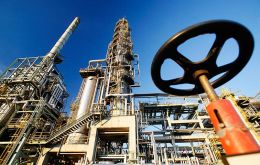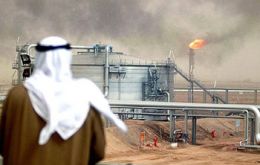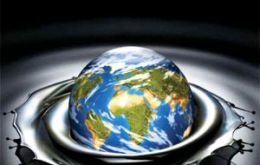MercoPress. South Atlantic News Agency
Tag: OPEC
-
Monday, May 23rd 2016 - 11:28 UTC
What does the next OPEC meeting have in store?

The next OPEC meeting on the 2nd of June will act as little more than a forum for continued altercations between Saudi Arabia and Iran. The 2 June 2016 OPEC meeting will be held amid a backdrop of oil prices near $50 per barrel, a sharp drop in Nigerian production due to sabotage, turmoil in Venezuela, Saudi Arabia operating with a new oil minister, and Iran aggressively pumping close to pre-sanction levels.
-
Monday, February 1st 2016 - 06:22 UTC
Venezuelan lobbying for oil production reduction: tour begins Monday in Russia

Venezuelan Oil Minister Eulogio Del Pino will visit Russia, Qatar, Iran and Saudi Arabia on a tour of OPEC and non-OPEC countries intended to drum up support for action to stem the tumble in crude prices.
-
Wednesday, September 16th 2015 - 09:18 UTC
OPEC refuses to cut output pushing higher-cost oil producers out of the market

The monthly report from the Organization of the Petroleum Exporting Countries said a weaker outlook for China would contribute to slower global oil demand growth next year. “U.S. oil production has shown signs of slowing,” OPEC said in the report. “This could contribute to a reduction in the imbalance of oil market fundamentals, however, it remains to be seen to what extent this can be achieved in the months to come.”
-
Monday, August 10th 2015 - 06:46 UTC
Global oil supply more fragile than you think

Many oil companies had trimmed their budgets heading into 2015 to deal with lower oil prices. But the rebound in April and May to $60 per barrel from the mid-$40s suggested that the severe drop was merely temporary.
-
Thursday, July 23rd 2015 - 08:58 UTC
Discouraging outlook for commodities this year confirms World Bank

The outlook for commodities remains grim for this year, except that oil will fall a bit less than previously forecast, the World Bank said. Average prices for fuels such as crude, natural gas and coal will tumble 39% from 2014, while those for materials like metals and fertilisers will fall about 12%, the Washington-based lender said in its quarterly “Commodity Markets Outlook” released Wednesday.
-
Saturday, June 6th 2015 - 08:11 UTC
OPEC holds production at 30 million bpd; markets react with volatility

Crude oil prices were volatile after ministers from the Opec cartel decided to hold production levels at 30 million barrels per day. Brent crude traded in a narrow range around $62 a barrel, before ending the day up 1.8% at $63.15.
-
Thursday, May 14th 2015 - 08:17 UTC
Saudi Arabia continues to turn screws on U.S. Shale

Saudi Arabia continues to ratchet up production, taking market share away from U.S. shale producers. According to OPEC's latest monthly oil report, Saudi Arabia boosted its oil output to 10.31 million barrels per day in April, a slight increase over the previous month's total of 10.29 million barrels.
-
Saturday, April 25th 2015 - 06:33 UTC
Oil price war may benefit both US Shale and Saudi Arabia

Even as financial commentators on CNBC are starting to come around to the idea of a bottom in oil prices, the key question for US oil producers remains one of timing. How long will the oil price slump last? Is this a relatively short term event like 2008, or a longer term slump like the one in the mid 1980’s?
-
Thursday, March 5th 2015 - 13:05 UTC
Here's what will send oil prices back up again

Oil's rapid decline since August of last year has been dramatic. To listen to some commentators you would also think it is unprecedented and irreversible. Those claiming that oil will continue to fall from here and remain low for evermore, however, are flying in the face of both history and common sense. The question we should be asking ourselves is not if oil prices will recover, but when they will.
-
Wednesday, January 14th 2015 - 07:47 UTC
OPEC member stands by group's decision not to cut output to tackle glut

Brent and US WTI crude oil prices fell to their lowest levels in almost six years on Tuesday as a big OPEC producer stood by the group's decision not to cut output to tackle a glut in the market.
